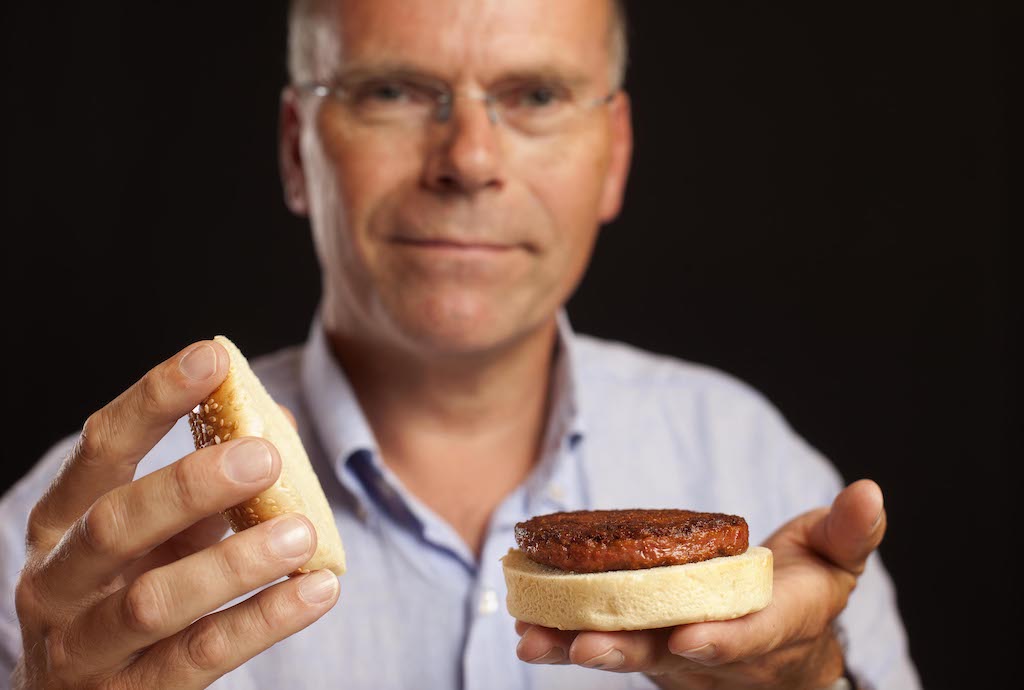10 Years Since THAT Burger: 10 Highlights From The Cultivated Meat Journey
10 Mins Read
On August 5, 2013, a team of Dutch scientists from Maastricht University, led by Dr Mark Post, showcased the world’s first burger made from cultivated meat at a tasting in London. It was the result of decades of research and trials, with food critics describing this first prototype “close to meat, but not that juicy”, and Post calling it a “good start”.
Now, 10 years on, the progress made by this industry has accelerated, with more companies and funding than ever before, as well as increased government and regulatory support, and steps towards price parity with conventional meat. Here are 10 highlights defining the meteoric rise of cultivated meat.
1) There are now over 150 companies working on cultivated meat around the world
According to industry think tank the Good Food Institute’s 2022 State of the Industry Report, the total number of cultivated meat companies is at least 156 – up from 107 in 2021. These producers are based in 26 different regions internationally, and at least 70 additional brands have joined the industry via partnerships or product and service offerings.
This total number of companies, however, is likely an underestimate, as it’s common practice for startups to begin in ‘stealth mode’ and announce their arrival after hitting their first milestone (such as a successful funding round or product prototype), but given that a decade ago, there wasn’t one incorporated company working on this technology, we’ve come a long way!
2) There are now dozens of types of cultivated animal flesh from quail to fish to foie gras
While that first burger tasting was for a beef burger, there are numerous kinds of cultivated meat being developed. Where Dr Mark Post’s Mosa Meat and Israeli startup Aleph Farms are focused on the cow, companies like GOOD Meat, ClearMeat, SuperMeat and Upside Foods are working on chicken (the latter has also debuted duck and beef products). Pork is another popular alternative, with brands like Meatable, Joes Future Food and Ivy Farm Technologies tackling Asia’s favorite meat.
There’s also cell-cultured seafood, from fish fillets to raw salmon to crustaceans such as prawn and crab. Singapore’s Umami Meats and Shiok Meats, and California’s Finless Foods and Wildtype Foods are all pioneering this sector.
Apart from these, Orbillion Bio produces Wagyu beef, in addition to working on elk, lamb and bison alternatives. French startup Gourmey is making cultivated foie gras, and Australia’s Vow want to use this tech to develop kangaroo, zebra, tortoise and yak meat – and it’s already showcased Japanese quail dumplings.
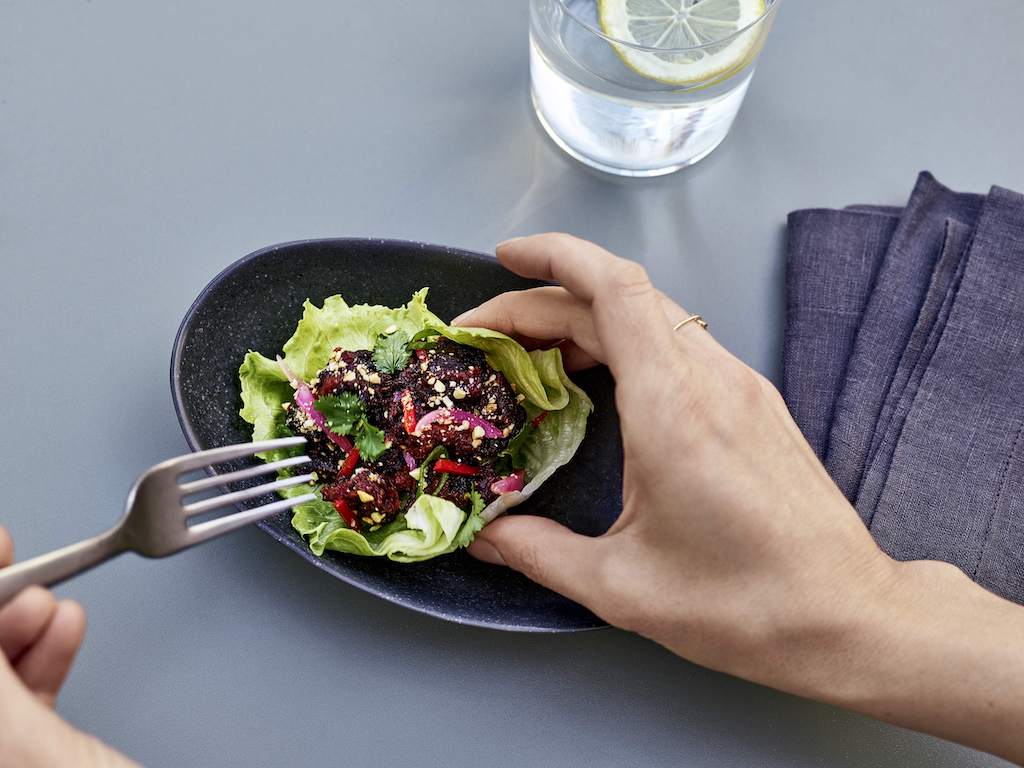
3) Nomenclature continues to be an issue
Cultivated meat, which is the industry’s preferred term, has many alternative names – from cultured meat to clean meat to synthetic meat to the industry’s least preferred term: lab-grown.
Research published in Nature Portfolio found ‘lab-grown’ to be the least favourable term among consumers (alongside ‘artificial meat’) too, while ‘cell-cultured’ and ‘cell-cultivated’ were the most popular. This is echoed by a 2021 GFI survey of 44 industry CEOs, 75% of whom preferred ‘cultivated’ meat. And in 2022, APAC stakeholders signed a memorandum of understanding declaring ‘cultivated’ as the preferred English-language term for these alternatives.
Mainstream media reporters continue to use the term lab-grown despite repeated requests from industry to stop doing so. One main reason journalists should rethink the term? It’s inaccurate. In fact, cultivated meat at commercial scale is not produced (or grown) in a lab environment. Rather, like most foods in our supermarkets, it is made in a food factory.
In 2021, Upside Foods strongly discouraged the use of terms like ‘lab-grown’ or ‘lab-based’, ‘synthetic’ and ‘fake’. It argued that ‘lab-grown’ suggests cultivated meat would always be made in a lab – but once it scales up, it could likely be made in a food-production-like environment. “The labelling of cultivated meat and poultry products will be a crucial component of how our industry conveys the basic nature, essential characteristics, and value of these products to consumers,” the company said.
4) Removing FBS from production is key to the industry’s long-term sustainability
One of the biggest controversies surrounding cultivated meat is the use of fetal bovine serum, a growth medium derived from cows. The use of this serum meant cell-cultured meat produced with it wasn’t animal-free – since it relied upon genetically altering animal cells – and Mosa Meat called the ingredient “not sustainable, reliable or scalable”.
The Dutch company ditched the serum in 2019, and last year published its formulation for developing a serum-free way to produce cultivated meat. “Using a method called RNA sequencing, we can study the changes in gene expression that the cells undergo when they differentiate into muscle,” the company said. It paved the way for companies across this sector to develop serum-free offerings.
Japanese startup IntegriCulture also developed cultivated chicken and duck liver cells using a serum-free medium, and South Korea’s CellMEAT created a serum-free cell culture medium to drive down production costs and provide an ethical cell-cultured meat option.
In fact, many of the more established cultivated meat companies are either phasing out or no longer using FBS in their production but the controversy remains, especially for industry detractors.

5) Total funding to date for cultivated meat startups is close to $3B
In its latest report, GFI report states that cultivated meat startups have raised a total of $2.78 billion in venture funding since 2016. In 2022, the sector reeled in $896 million – and while this was a 33% year-on-year drop, the amount still outperformed the overall global VC funding decline of 35% year-on-year.
Europe saw higher investments in cell-cultured meat last year than in 2021, while Asia Pacific companies raised more capital in 2022 than any other year. It was also the year that saw the largest single deals for both a cultivated meat (Upside Foods) and seafood company (Wildtype Foods), while the number of unique investors also grew year-on-year by 19% to 679.
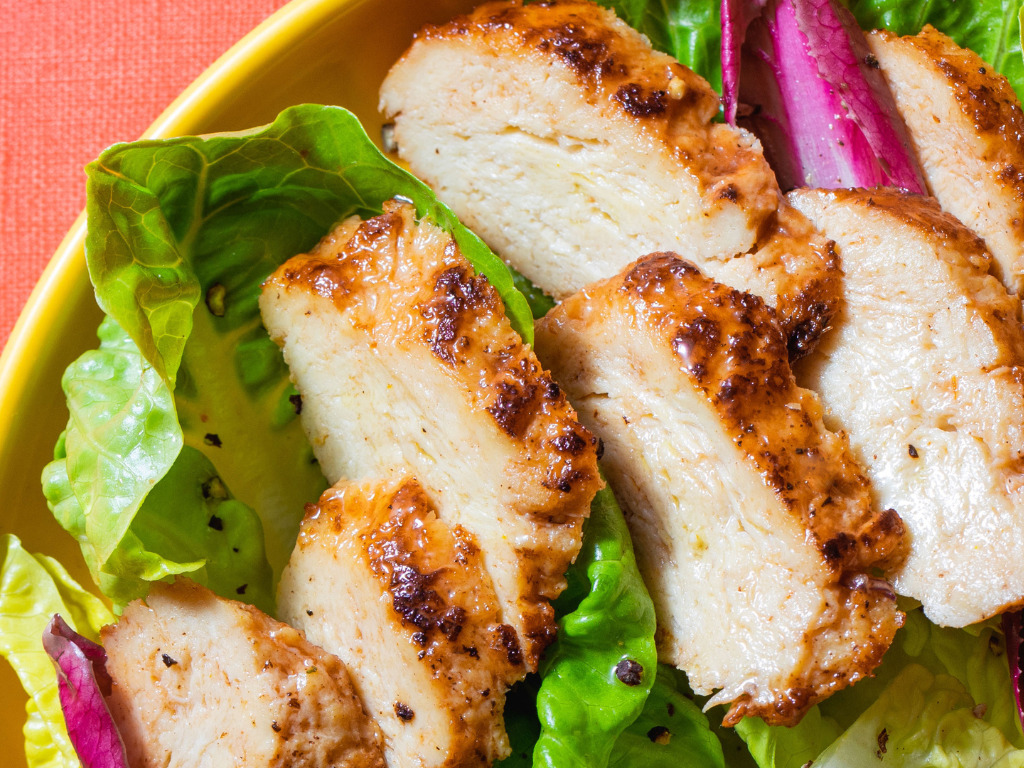
6) Governments around the world are (slowly) starting to fund cultivated meat
Amidst a worsening climate crisis and more frequent food supply disruptions, governments around the world are increasingly looking to future food technologies as potential solutions as part of national food security strategies.
In 2022, Europe led the world in financing cultured meat research and development. The Netherlands announced a €60M investment – a world record – towards building a cellular agriculture ecosystem, while Norway pledged €10M for a five-year programme to develop cellular agriculture and solve cost and scalability issues. In Spain, a €750,000 grant was given to a biotech company to study cultivated meat industrialisation.
Horizon Europe, the EU’s core innovation and research funding programme, also mentioned cultivated meat and seafood as one of its three core pillars, with around €7M set aside for this sector. Meanwhile, the UK’s Biotechnology and Biological Sciences Research Council poured £20M into research and development for alt-proteins, which include cell-cultured meat.
Across the Atlantic, the US Department of Agriculture awarded a $10M grant in 2021 to Tufts University to build the National Institute for Cellular Agriculture, which was the first-ever government-funded research project. And in September last year, the Biden administration introduced a biotech programme that includes finances for “foods made with cultured animal cells”. Meanwhile, California allocated $5M for alt-protein research in its state budget, becoming the first US state to invest in research for cultivated meat.
In the Middle East, Israel leads the alt-protein wave. In 2021, it invested $18M to fund the world’s largest cultivated meat consortium, while government funding has contributed $13M to early-stage startups and infrastructure.
Asia also saw an increase in government investments in cultivated meat. South Korea awarded a $15M million grant to cell-based meat startup Space F, while Japan provided a ¥240M ($2.2M) grant to build the country’s first bioreactor for cultured meat production. Meanwhile, Singapore and Israel collaborated to award a joint grant to Steakholder Foods and Umami Meats to develop 3D-printed cultivated grouper fish. Notably, the Singaporean government has made alternative proteins and cultivated meat a key part of its 30 by 2030 food security plan.
7) Only 2 countries allow for the commercial sale of cultivated meat
As of today, only 2 countries have given cultivated meat the regulatory green light.
In 2020, Singapore famously became the first country in the world to approve the sale of cultivated meat after granting regulatory approval to Eat Just, the parent company of GOOD Meat. Since then, a host of companies have flocked to the island nation to pass through its regulatory process and enter the market. Earlier this year, Singapore also became the first country to grant regulatory approval for the use of serum-free media in cultivated meat (also awarded to GOOD Meat).
In June, the US became just the second country on the list to greenlight the sale of cell-cultured meat, as GOOD Meat and Upside Foods passed the premarket regulatory review process for cultivated chicken.
Many countries have regulatory systems in place for alt-proteins, but they are yet to grant approval to companies for sale. The Netherlands has, however, approved cultivated meat and seafood tastings. And in July, Aleph Farms submitted the first regulatory application for cell-cultured meat in Europe, filing for approval in Switzerland. Days later, it also applied for clearance in the UK. But so far, no cultured meat company has filed for regulatory approval in the EU. Israel is another locus of activity with more cultivated meat companies per capita than almost anywhere, and pundits have predicted it could be next for regulatory approval, but so far, the jury is still out.
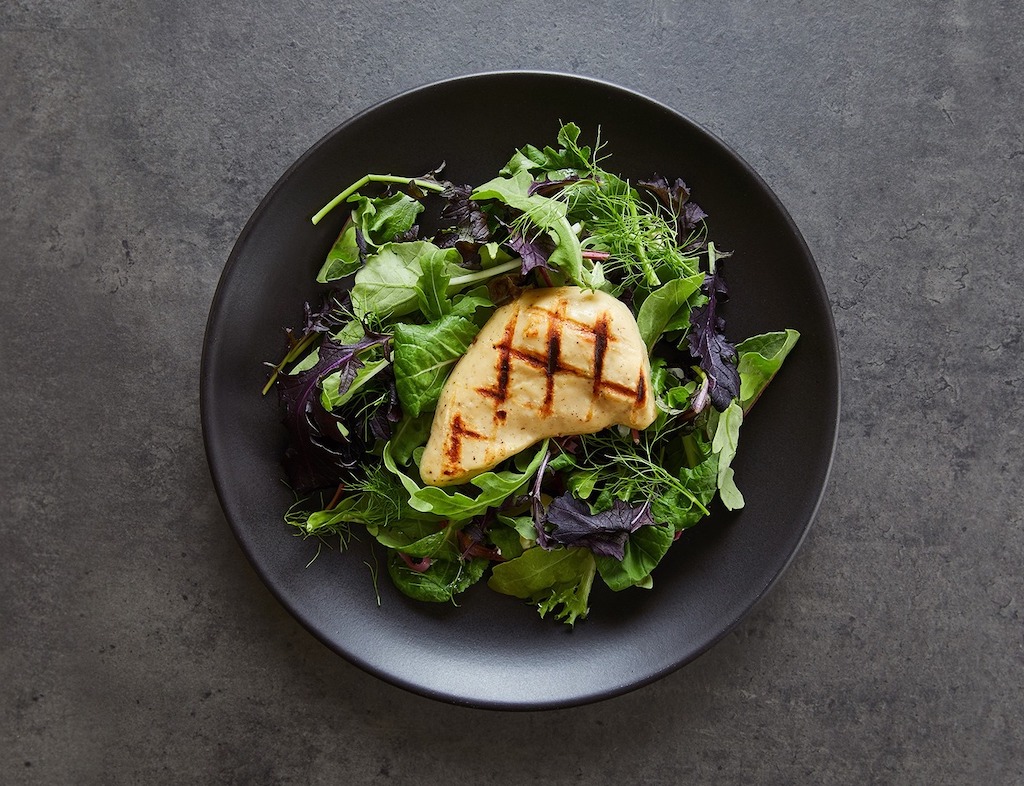
8) Only a small handful of restaurants in the world have served diners cultivated meat
Currently, only a handful of restaurants across the globe are selling cultivated meat, with Singapore’s regulatory approval paving the way for eateries to debut these alternatives. In 2020, after the approval was granted, 1880 became the world’s first restaurant to serve cultivated meat, namely GOOD Meat’s chicken. This was followed by JW Marriot’s Madame Fan restaurant, which replaced all chicken items on its menu with GOOD Meat’s product in 2021, and Huber’s Butchery and Bistro, which also introduced the company’s cultivated chicken on its menu in 2022 where it remains on the menu today.
And in July, San Francisco’s Bar Crenn, owned by chef Dominique Crenn, became the first US restaurant to serve cultivated meat in the US – with Upside Foods’ chicken – followed a week later by chef José Andrés’s Washington DC eatery China Chilcano, also serving GOOD Meat’s cell-cultured chicken.
9) From cultivated meat to cell-based coffee, chocolate and fur: how the industry’s tech inspired alternatives beyond food
While the technology for cultivated meat was originally developed to make a slaughter-free alternative to animal flesh, the industry inspired entrepreneurs and scientists from all kinds of other sectors to use the science to find cell-based alternatives to other high-emission products. Several companies are producing an animal-free alternative to dairy Indo-American startup Brown Foods, Canada’s Opalia, and Israel’s Wilk, which makes yoghurt from cultivated milk fat. Meanwhile, startups like Australia’s Me& and US-based Biomilq are pioneering cultivated breast milk.
There’s also cultivated chocolate, with startups like Israel’s Celleste Bio and California Cultured leading the pack. The latter is now also working on cell-based coffee, something researchers from Finland’s VTT Technical Research Centre say they developed in 2021 with French startup Stem working on the beanless coffee alternative too.
As of today, there are cultivated alternatives to chicken eggs, caviar, collagen (which includes Aleph Farms), palm oil, animal fur and leather, and chicken broth for dogs. Undoubtedly, there’s more cultivated innovation to come!
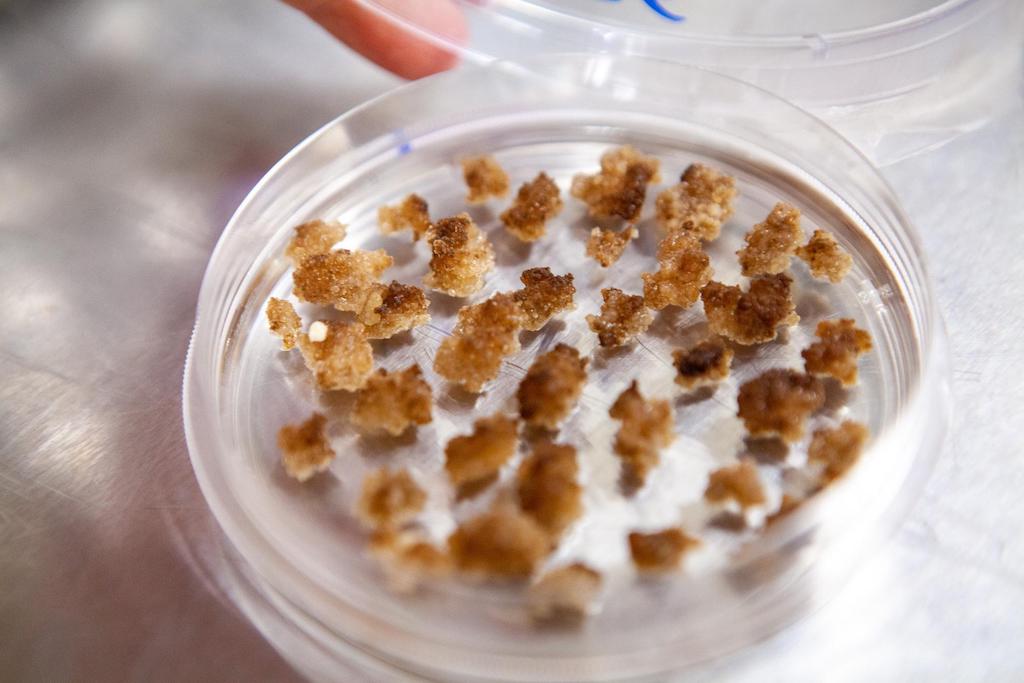
10) Cultivated meat and price parity: an ongoing battle
Alongside regulatory approval, the cost of these products is the biggest obstacle for the cultivated meat industry to overcome. But there have been major steps forward in this area. 10 years after Dr Post and his team’s showcased the first beef burger tasting in what reportedly cost over $300,000 for two patties, the cost is now closer to approximately $100 per pound (some companies have suggested a few hundred per pound, others have quoted under $100, so this is an average) thanks to continuous R&D and production scaling.
While at Bar Crenn, Upside Foods’ chicken is part of a six-course $150 prix fixe tasting menu – on par with (or cheaper than) many fine-dining tasting menus, the company is likely losing money per serve (hence the very limited availability of the menu), and we are still a while away from cultivated meat being able to compete with conventional meat or even plant-based meat
While GFI predicts that cultivated meat could reach cost parity with its traditional counterparts by as early as 2030 and further analysis by industry supplier Ark Biotech highlighted how cost-competitive cultivated meat could be a reality, many industry insiders are more cautious. Startups want to scale, but a lack of bioreactor facilities, a need for more funding, and the high cost of media (including FBS-free serum) mean the industry is unlikely to compete with supermarket beef chuck anytime soon.


